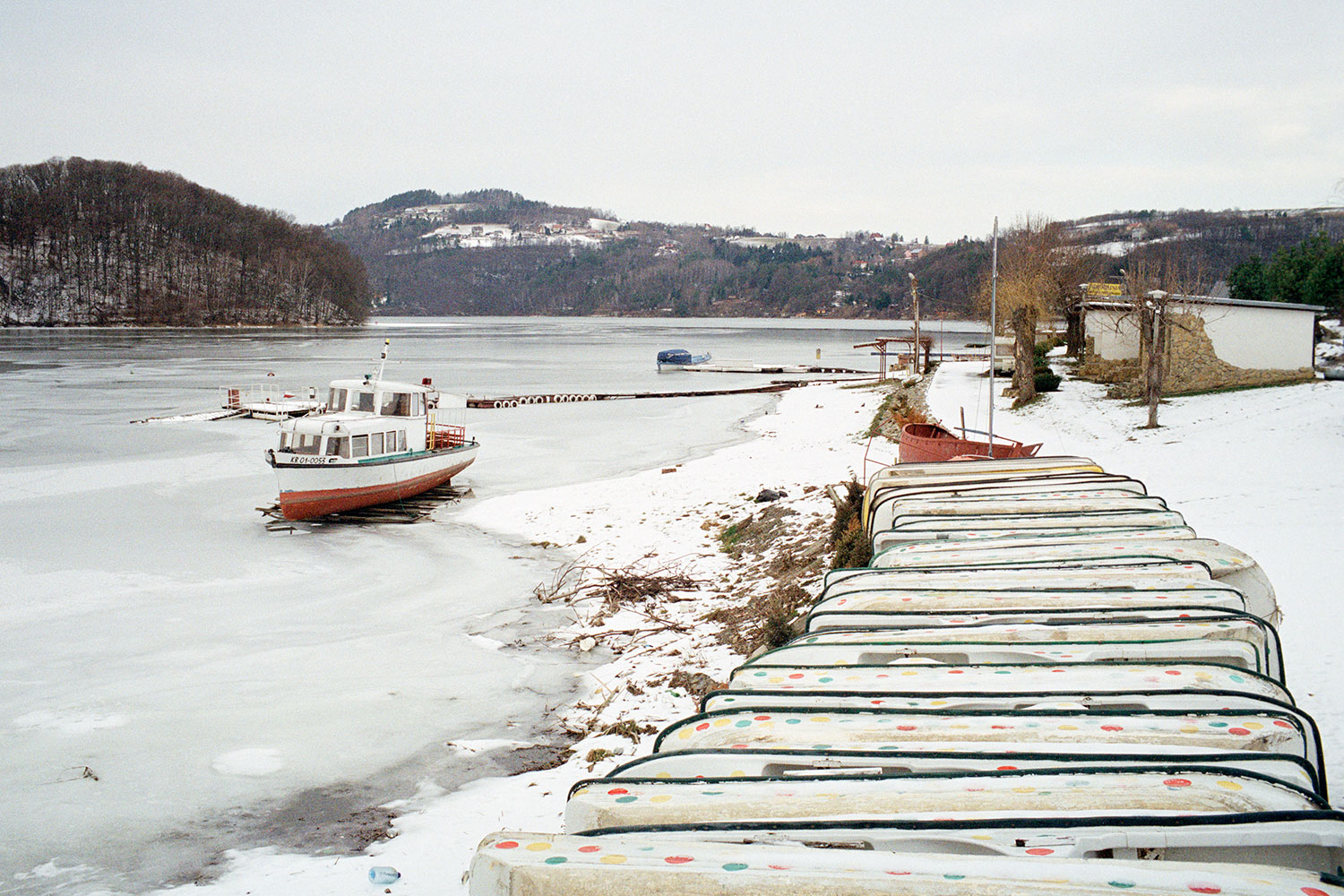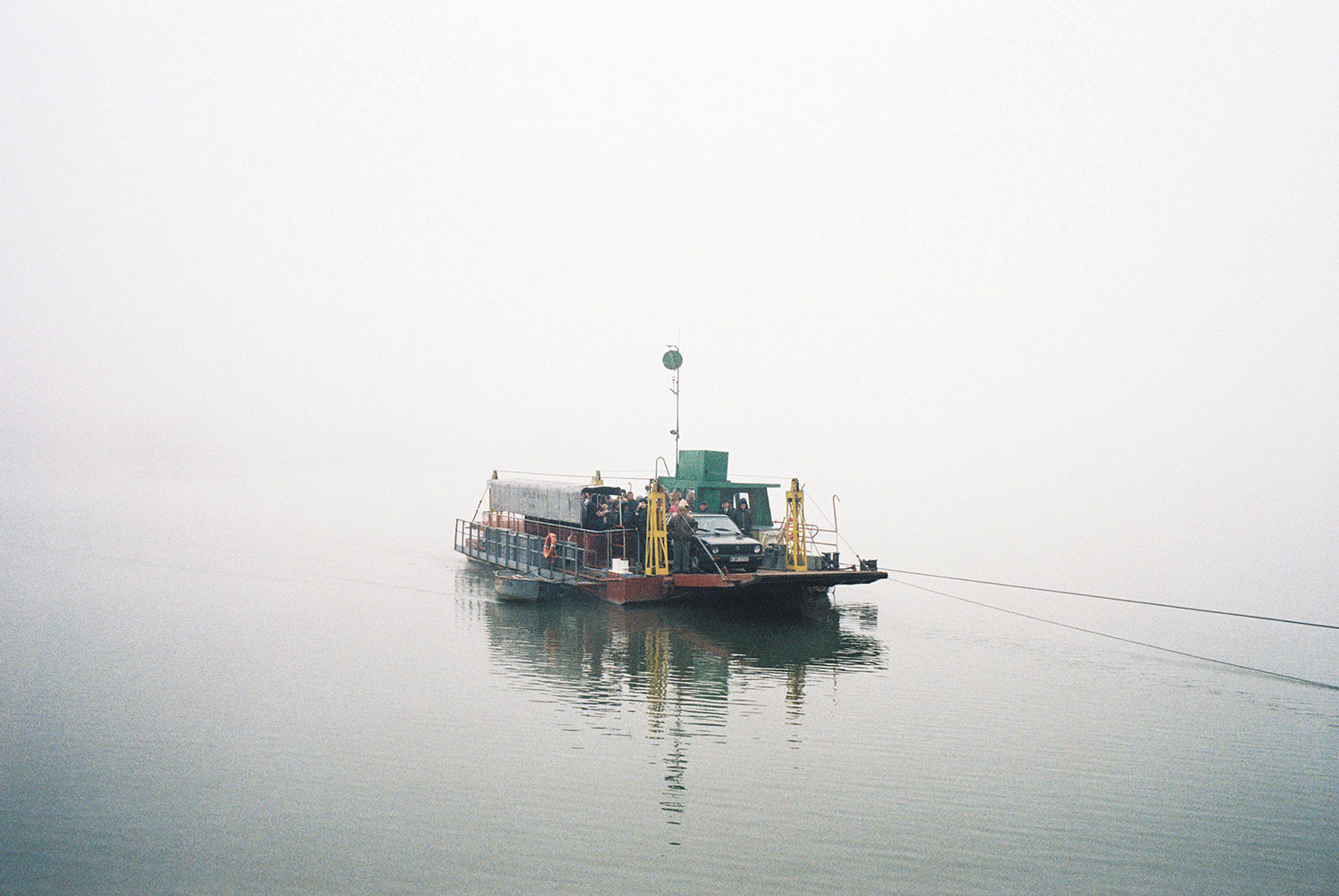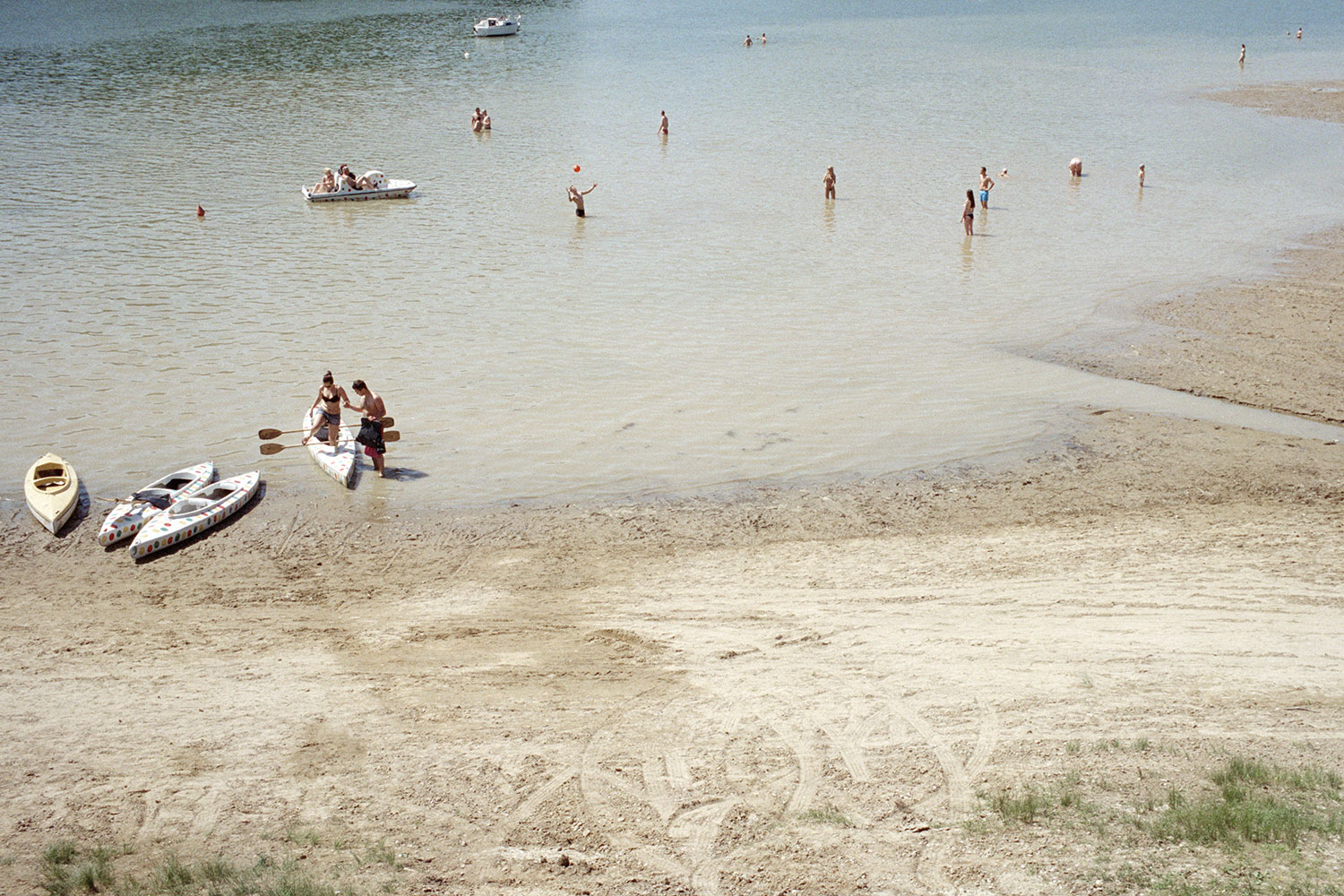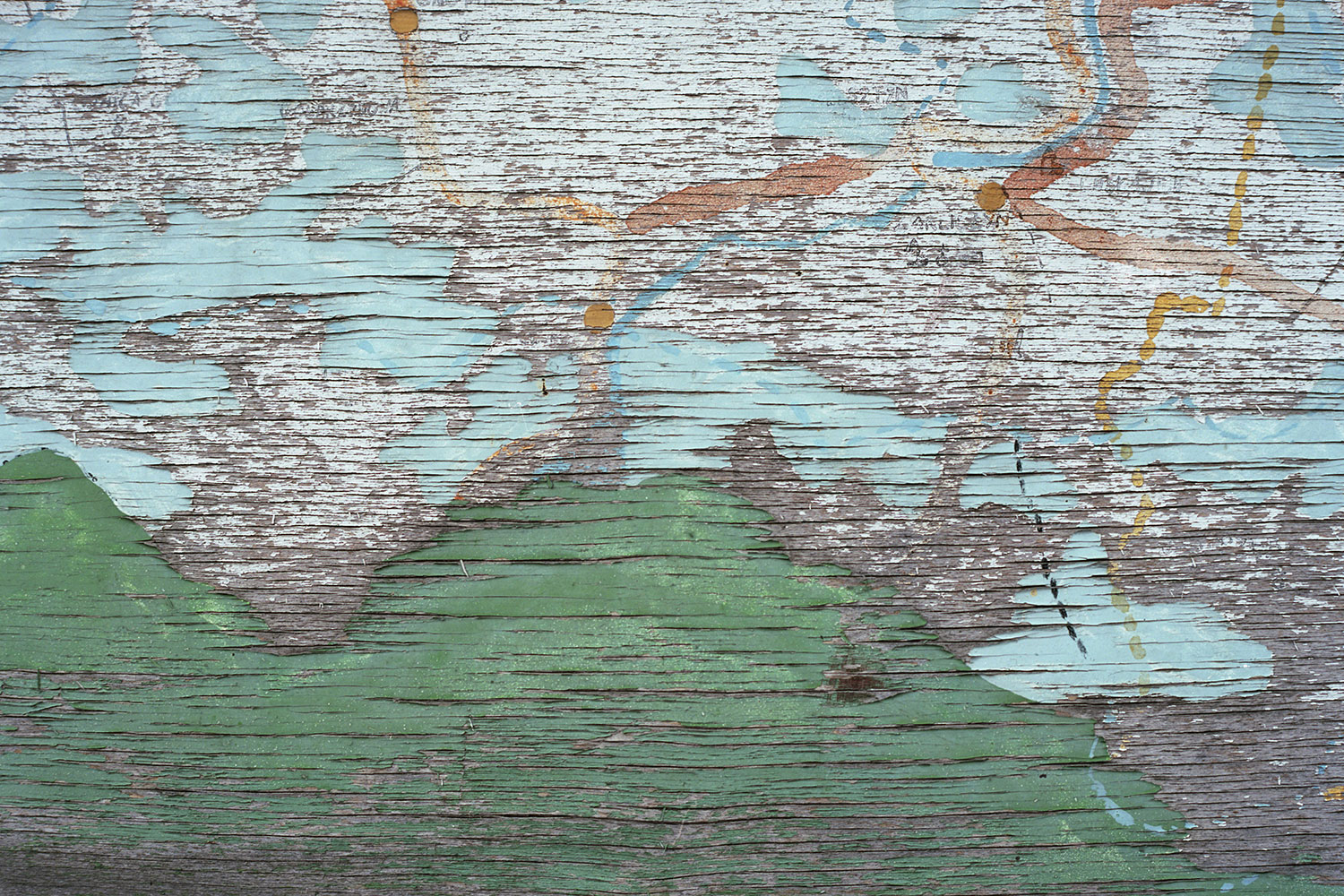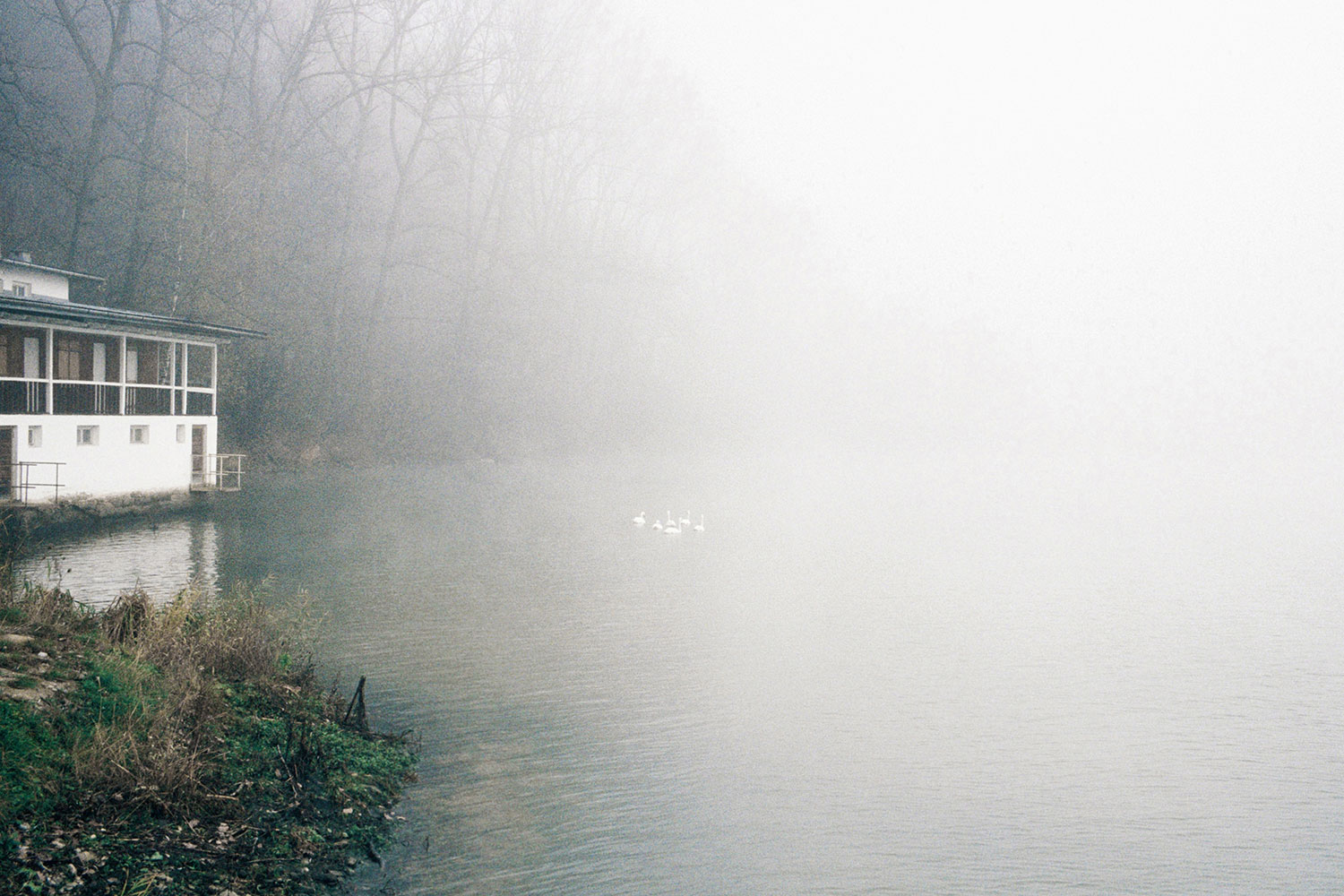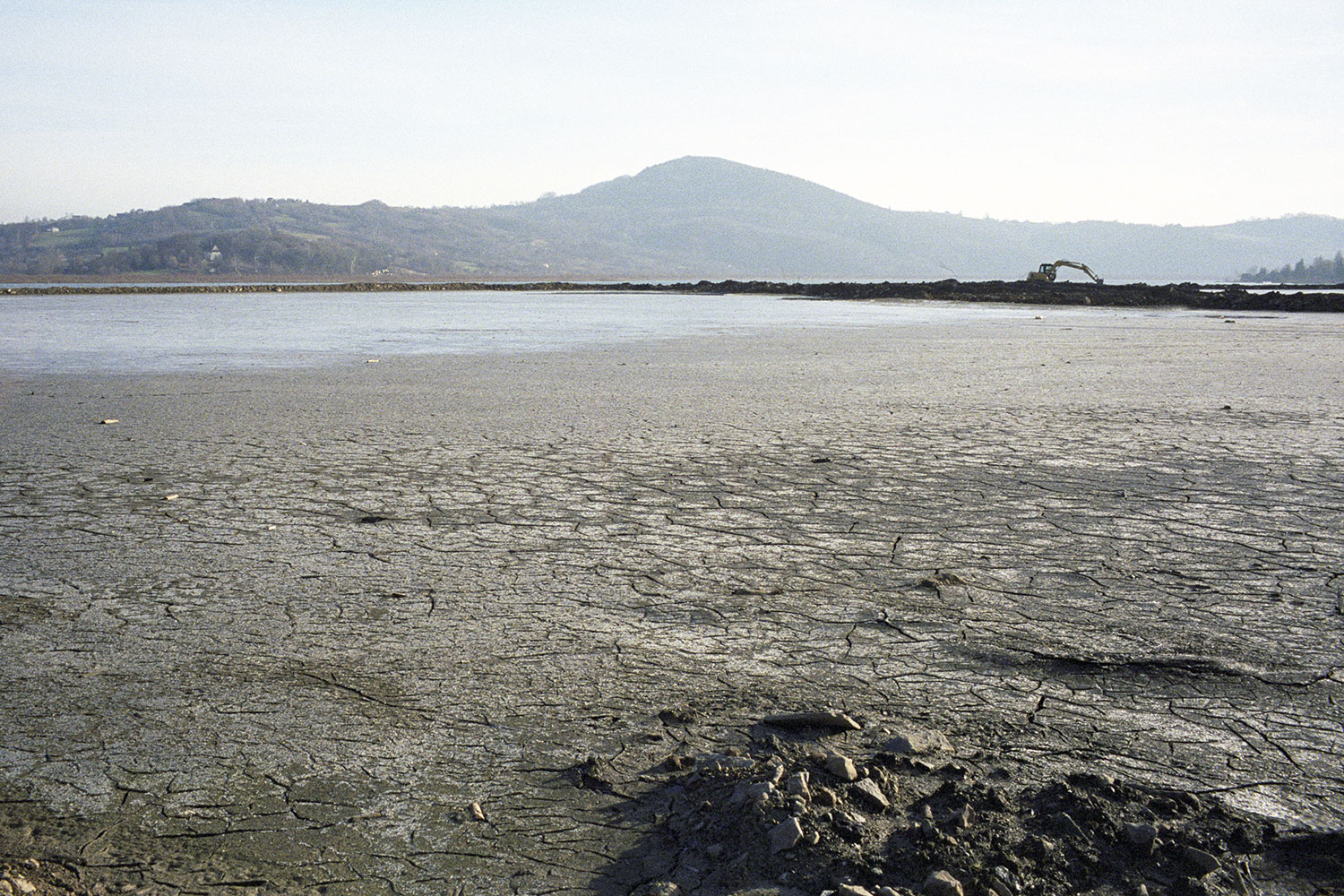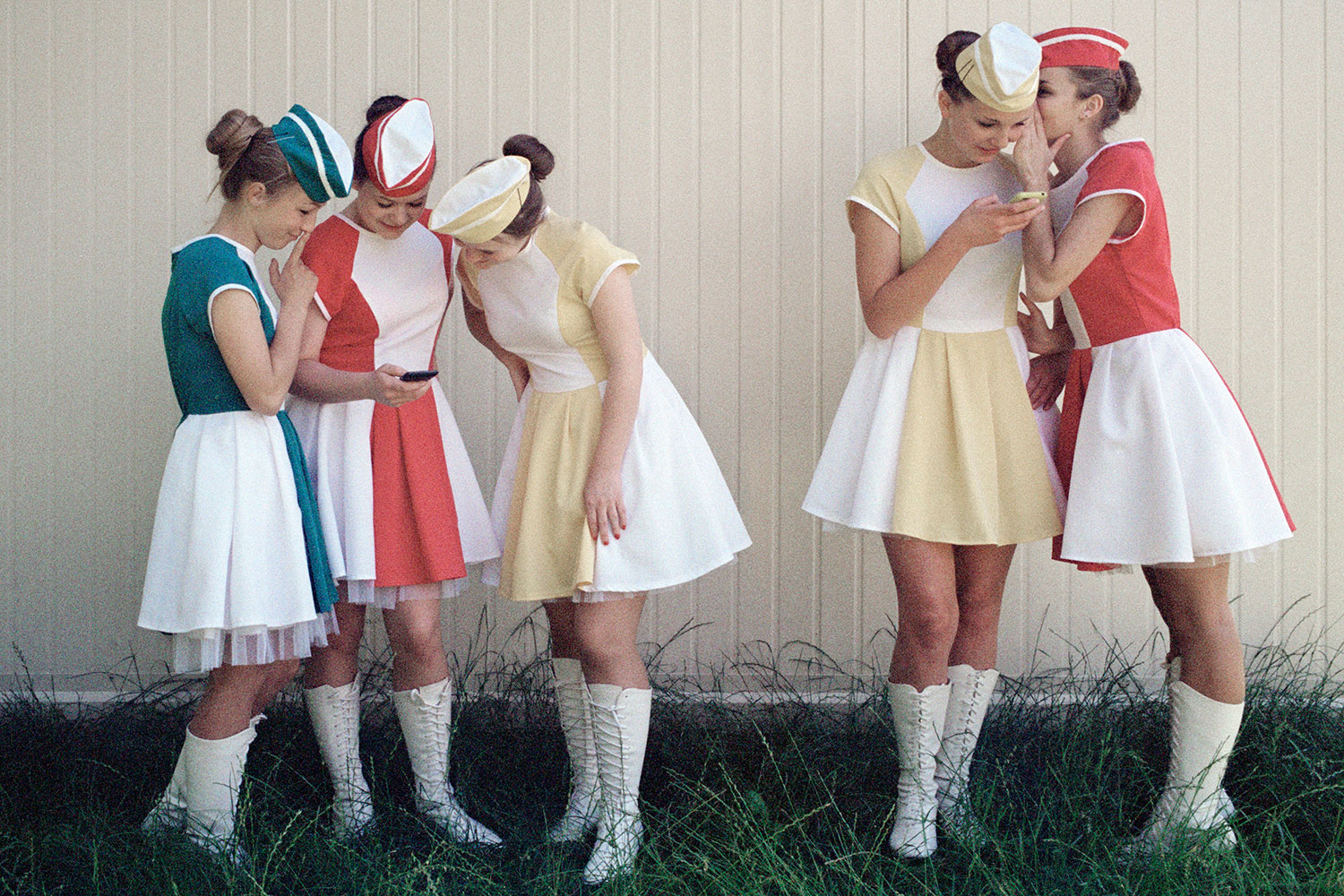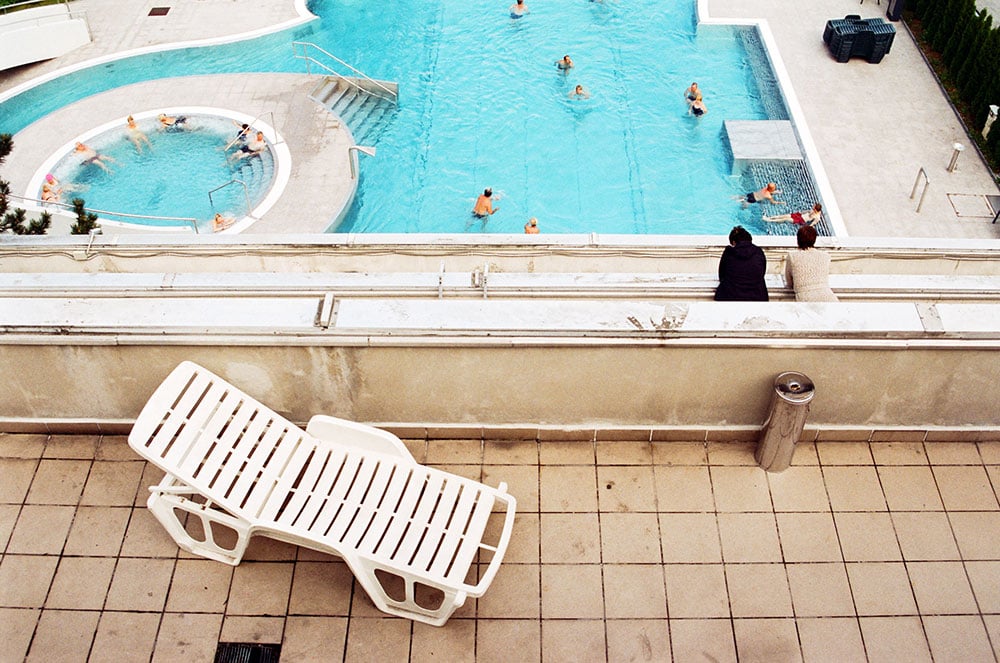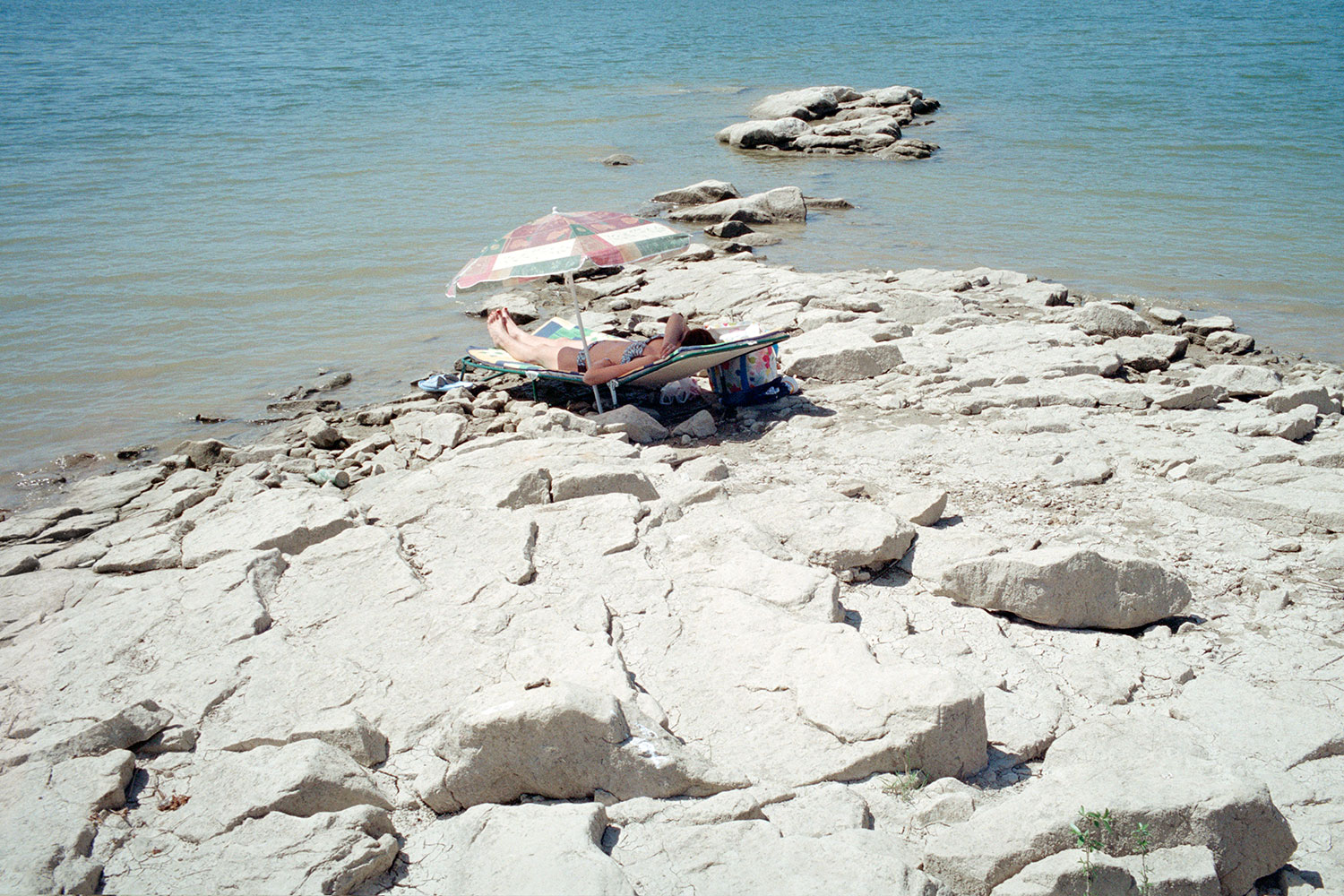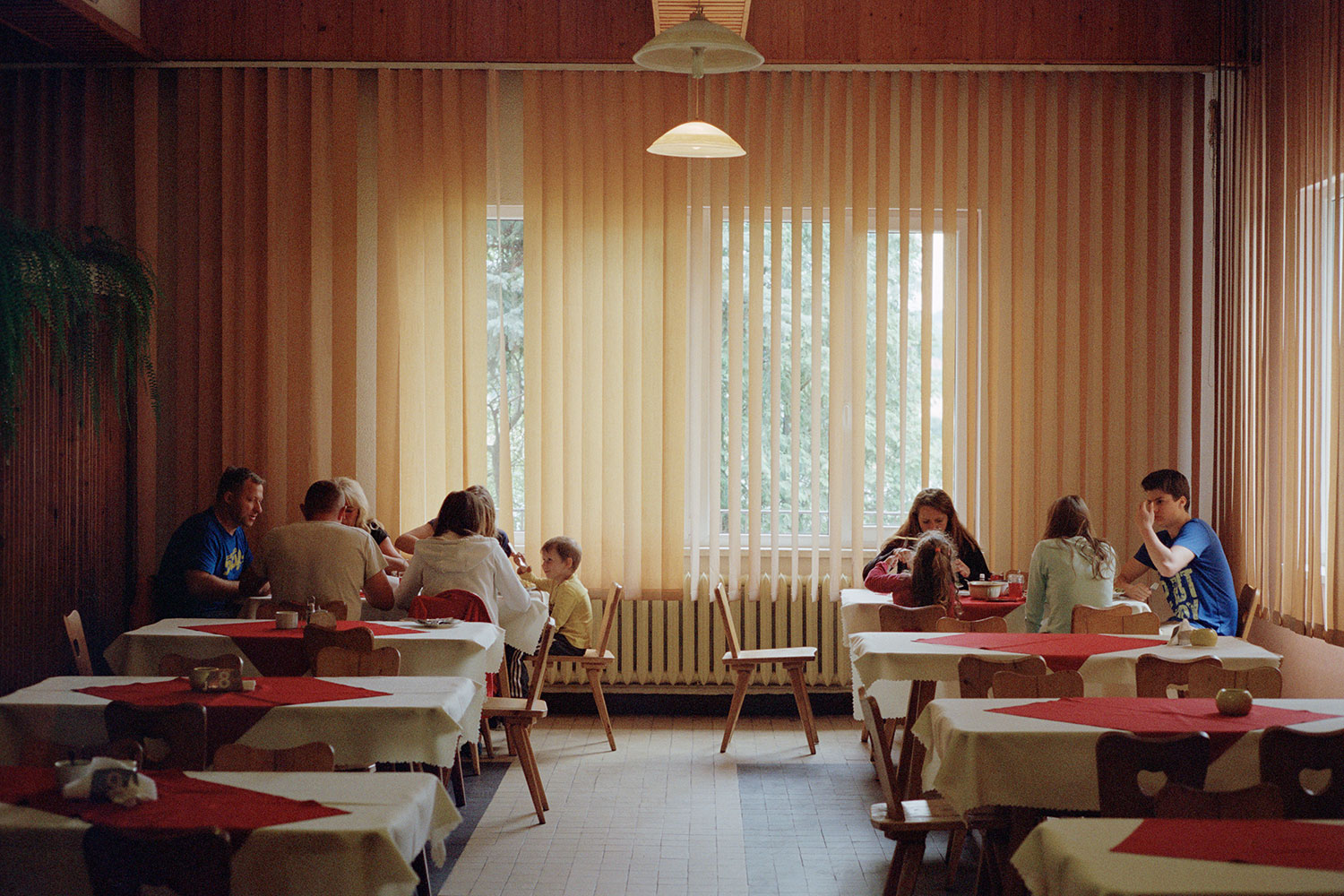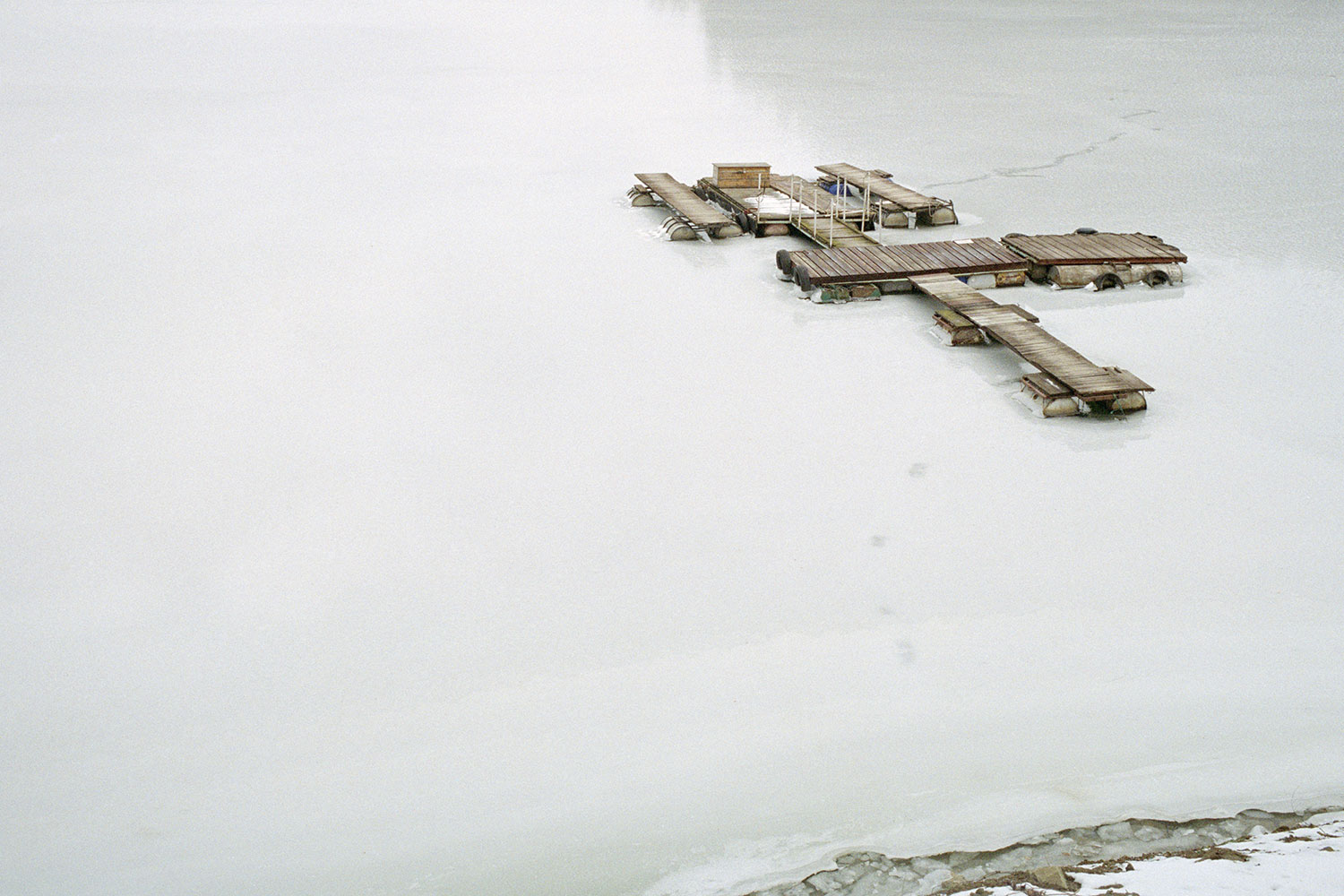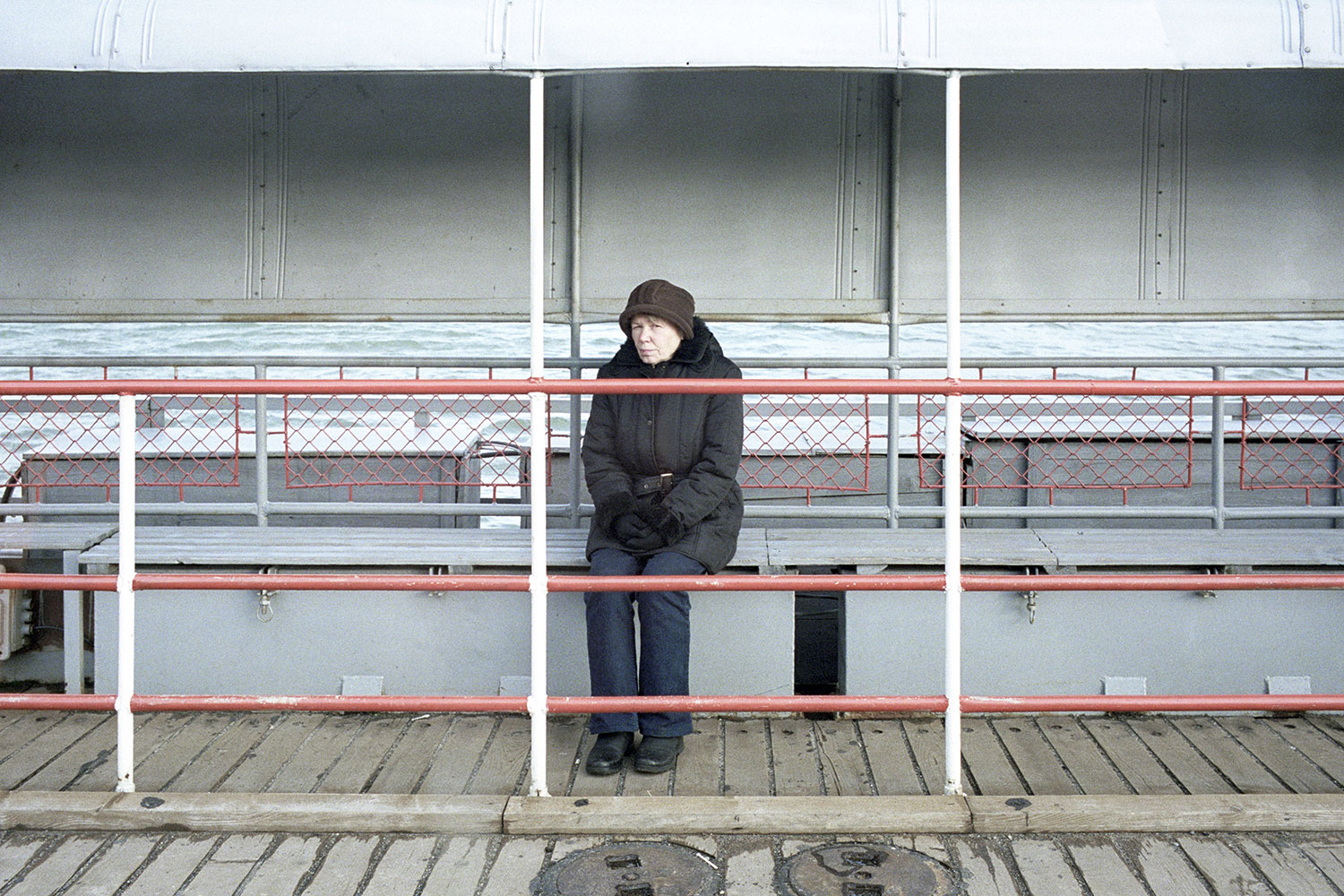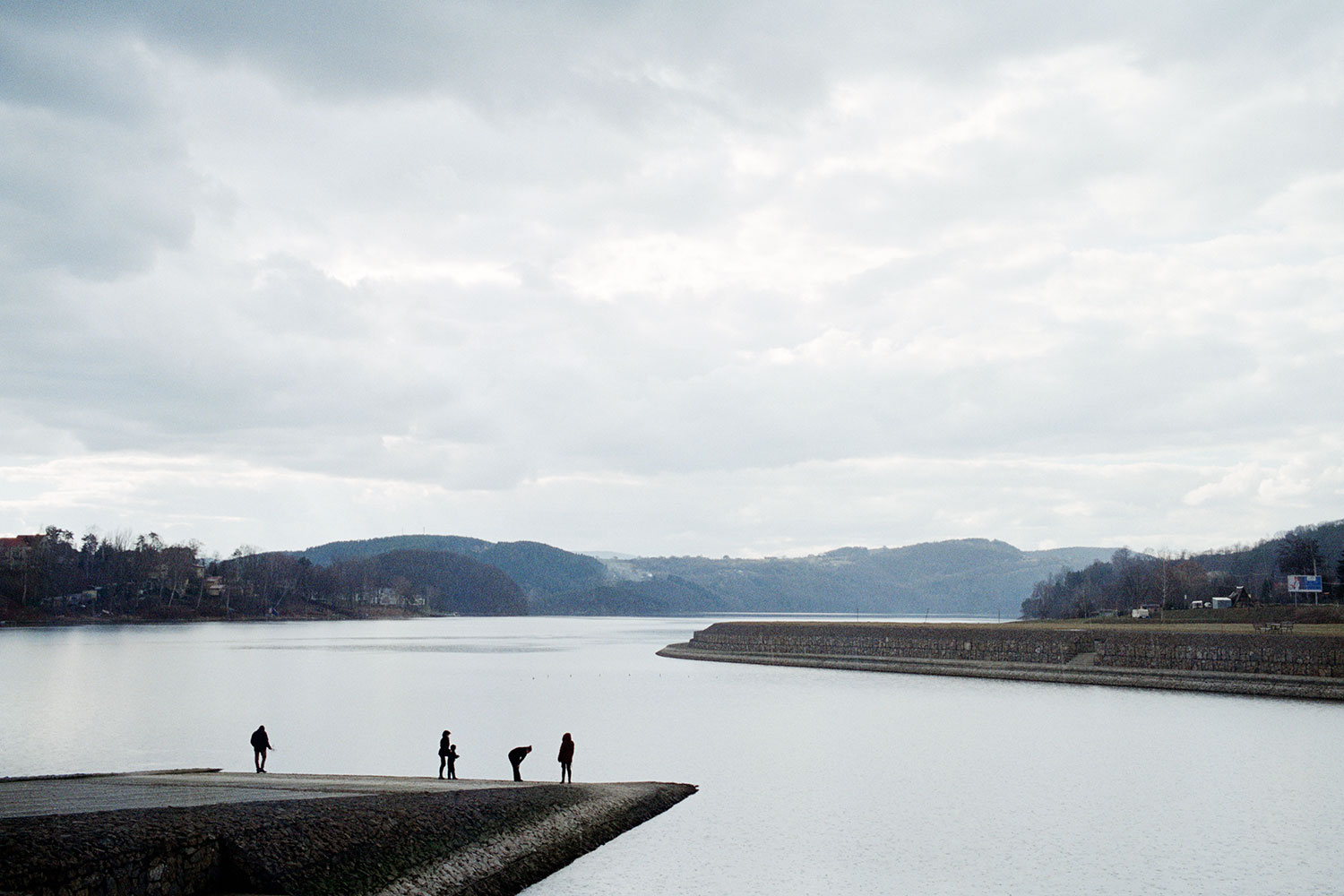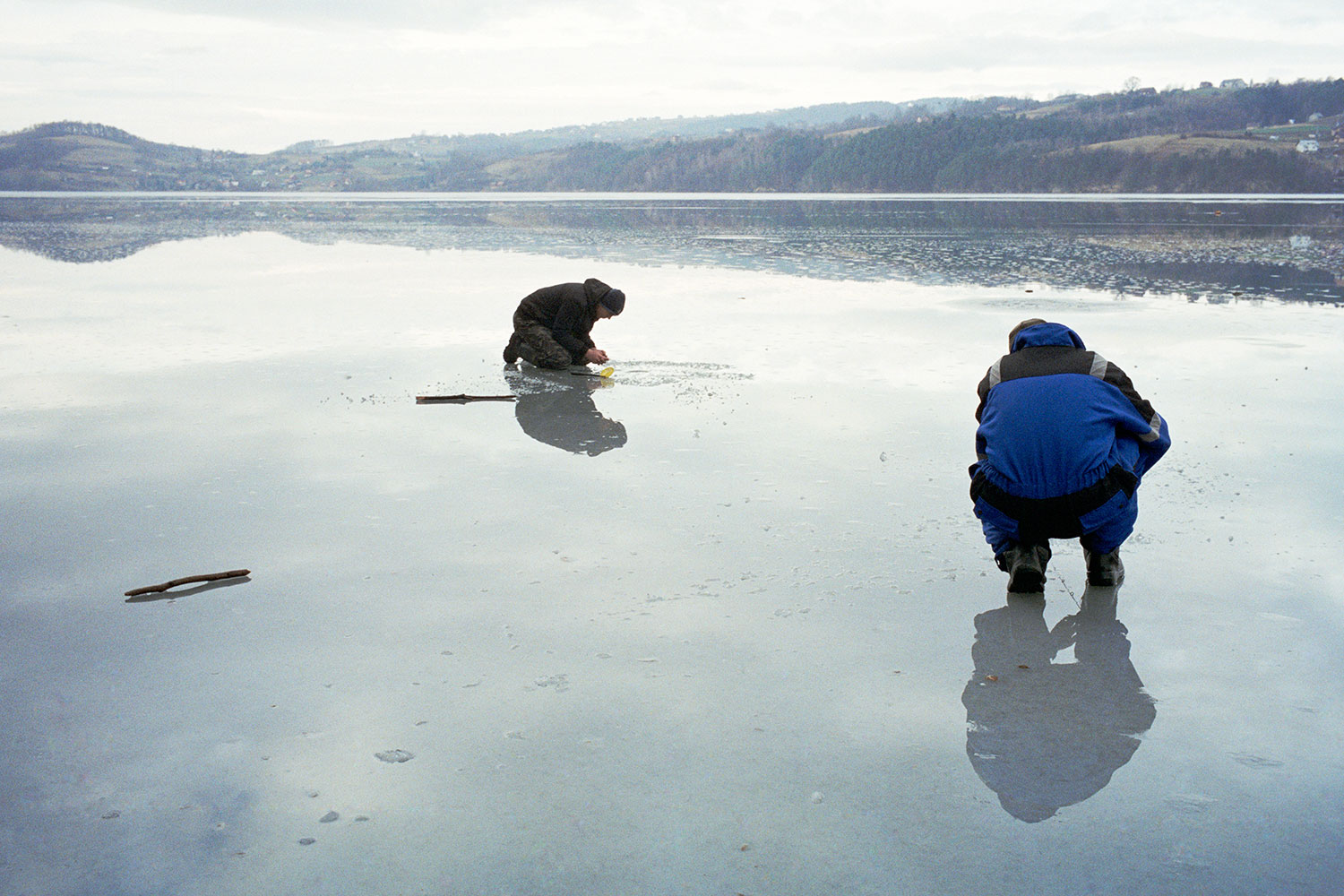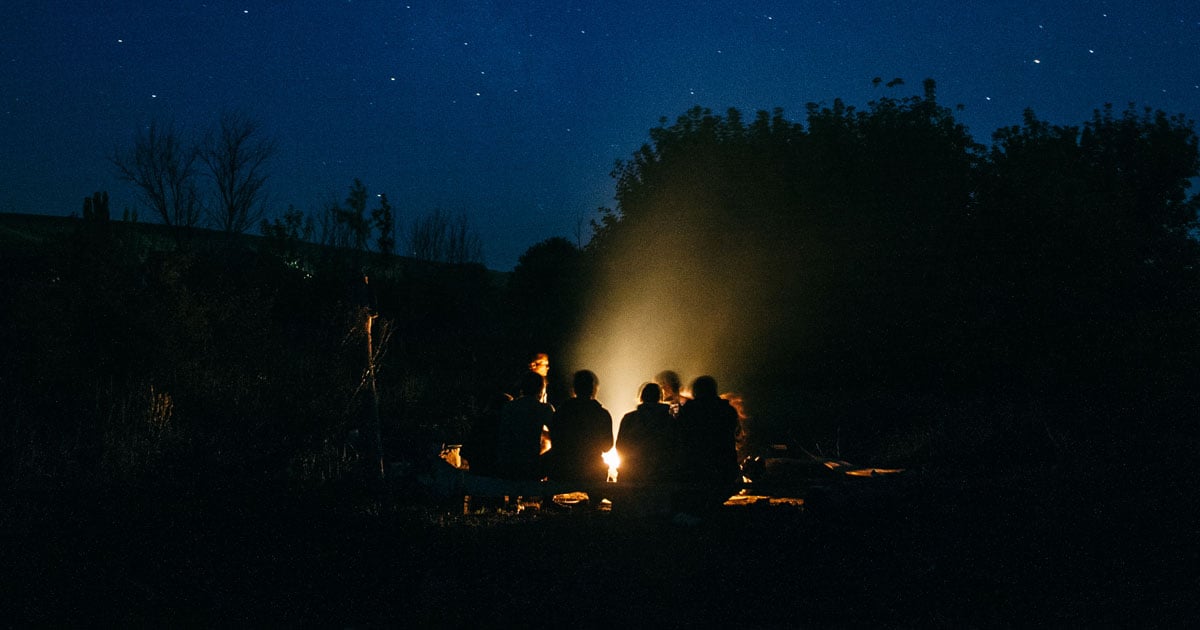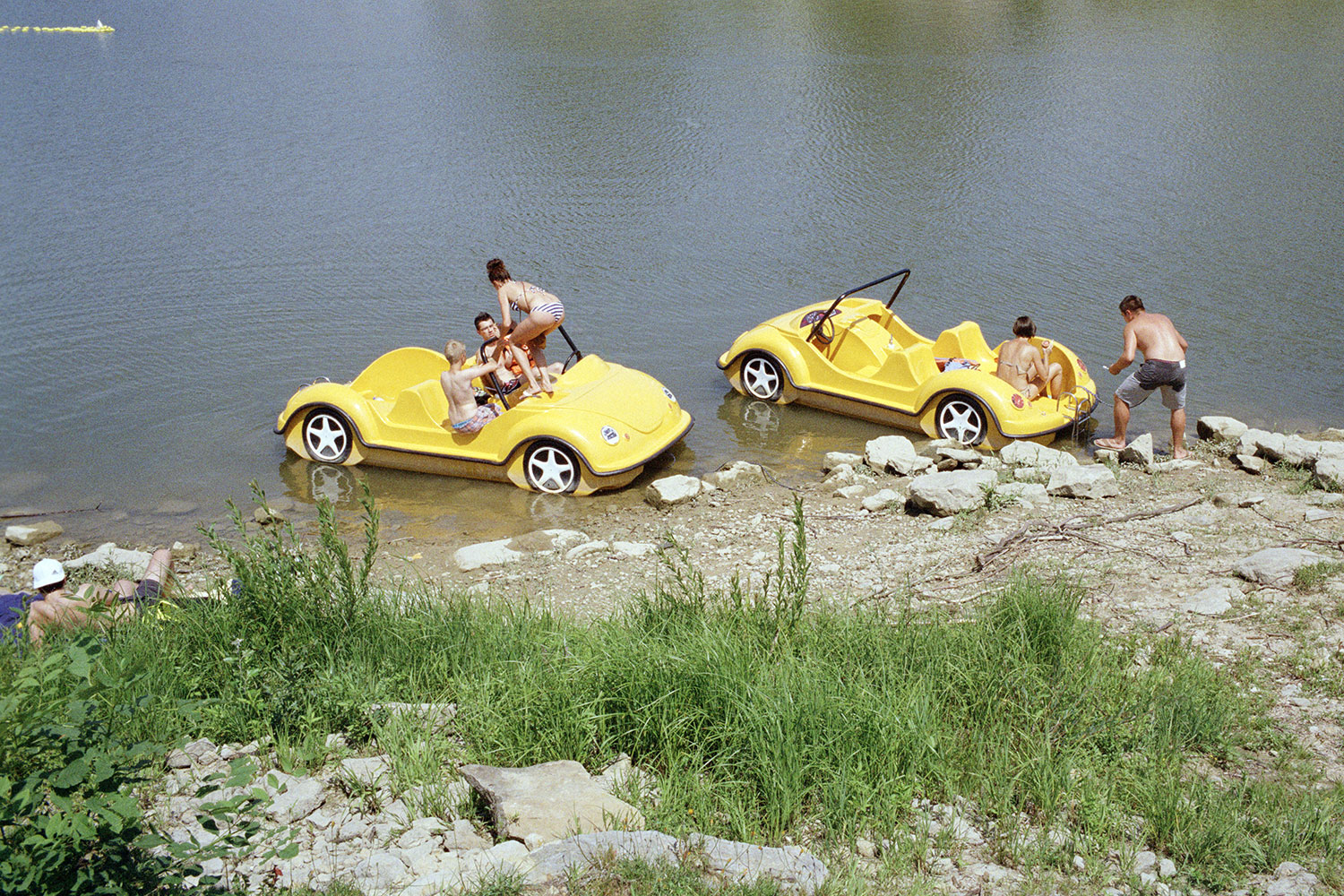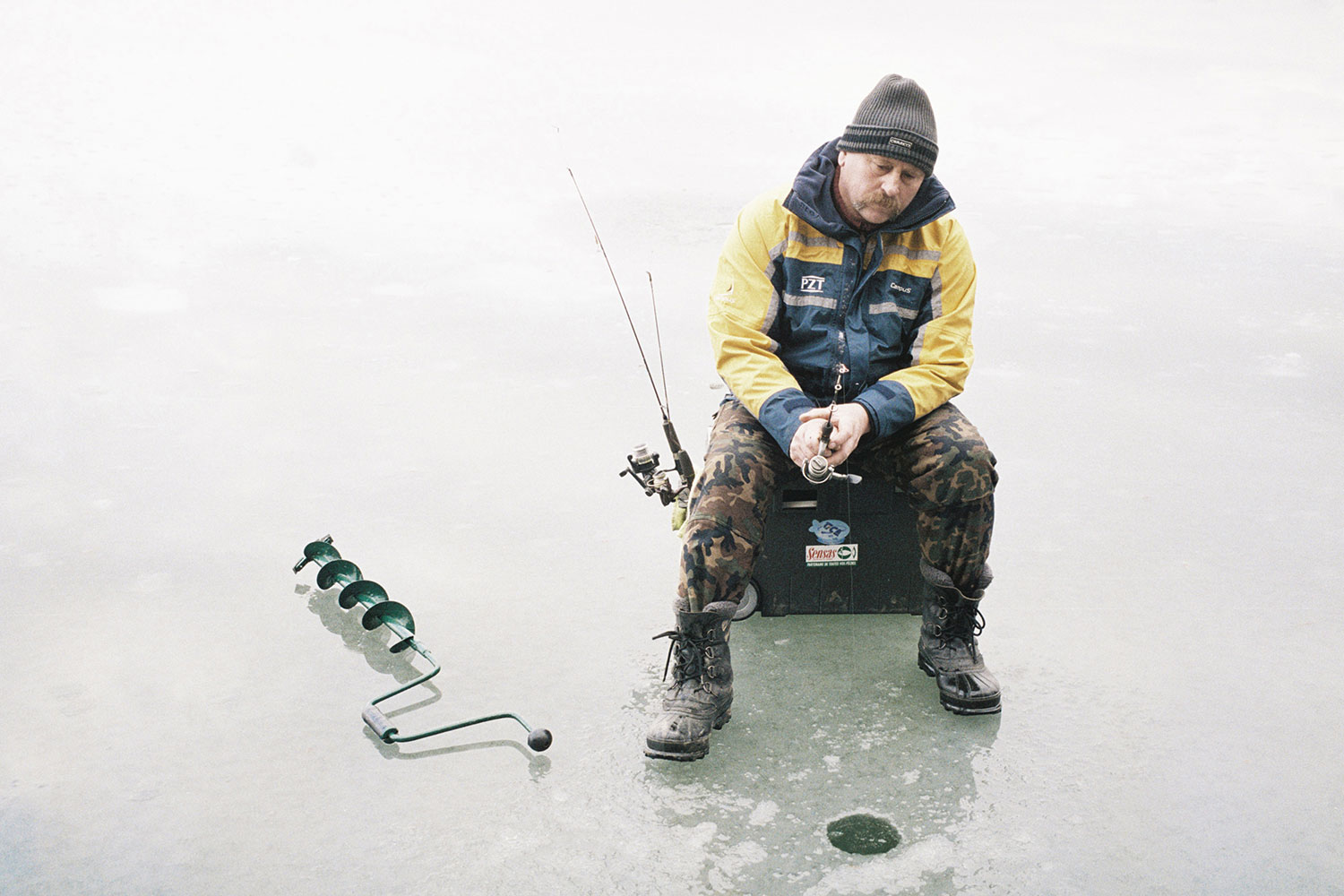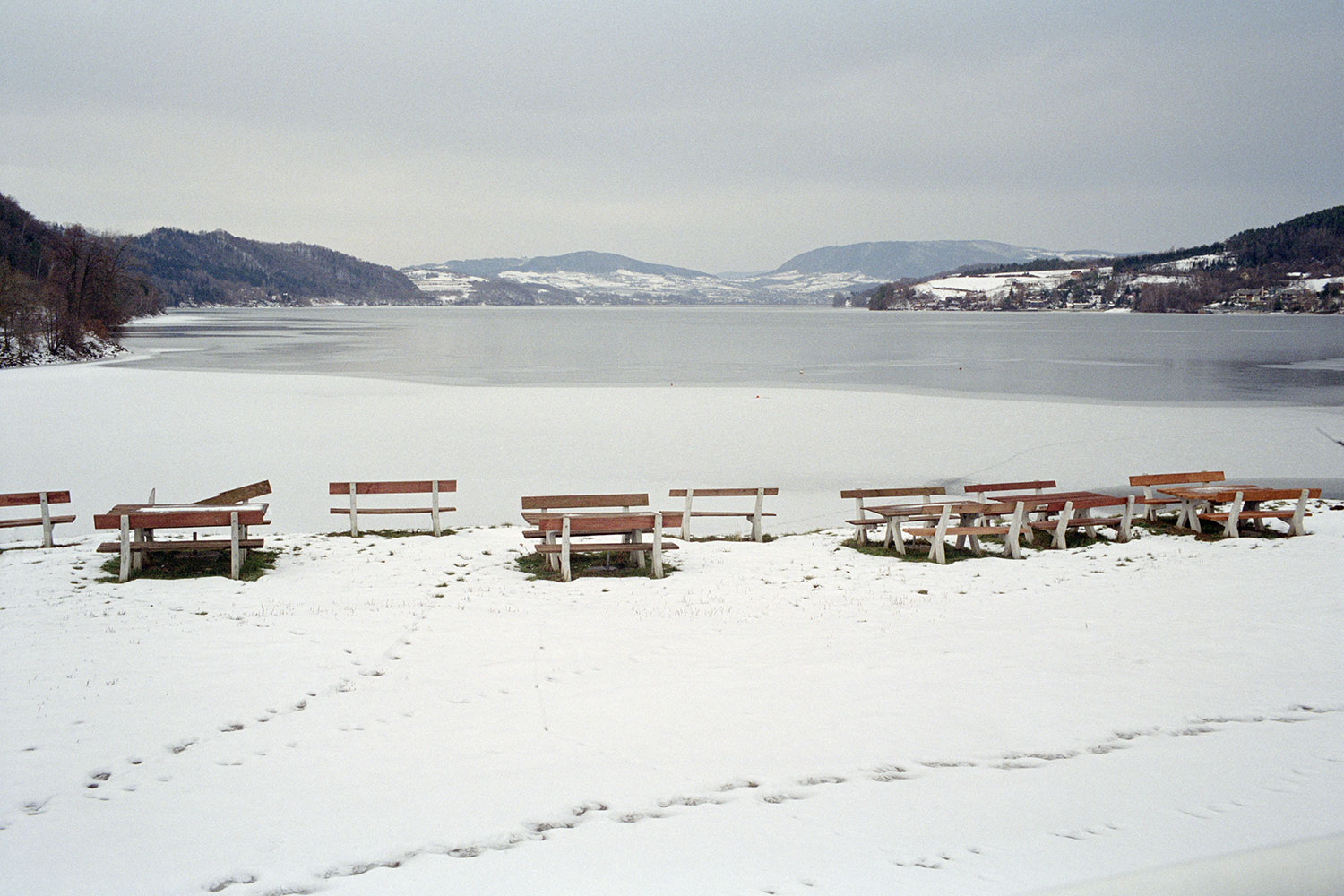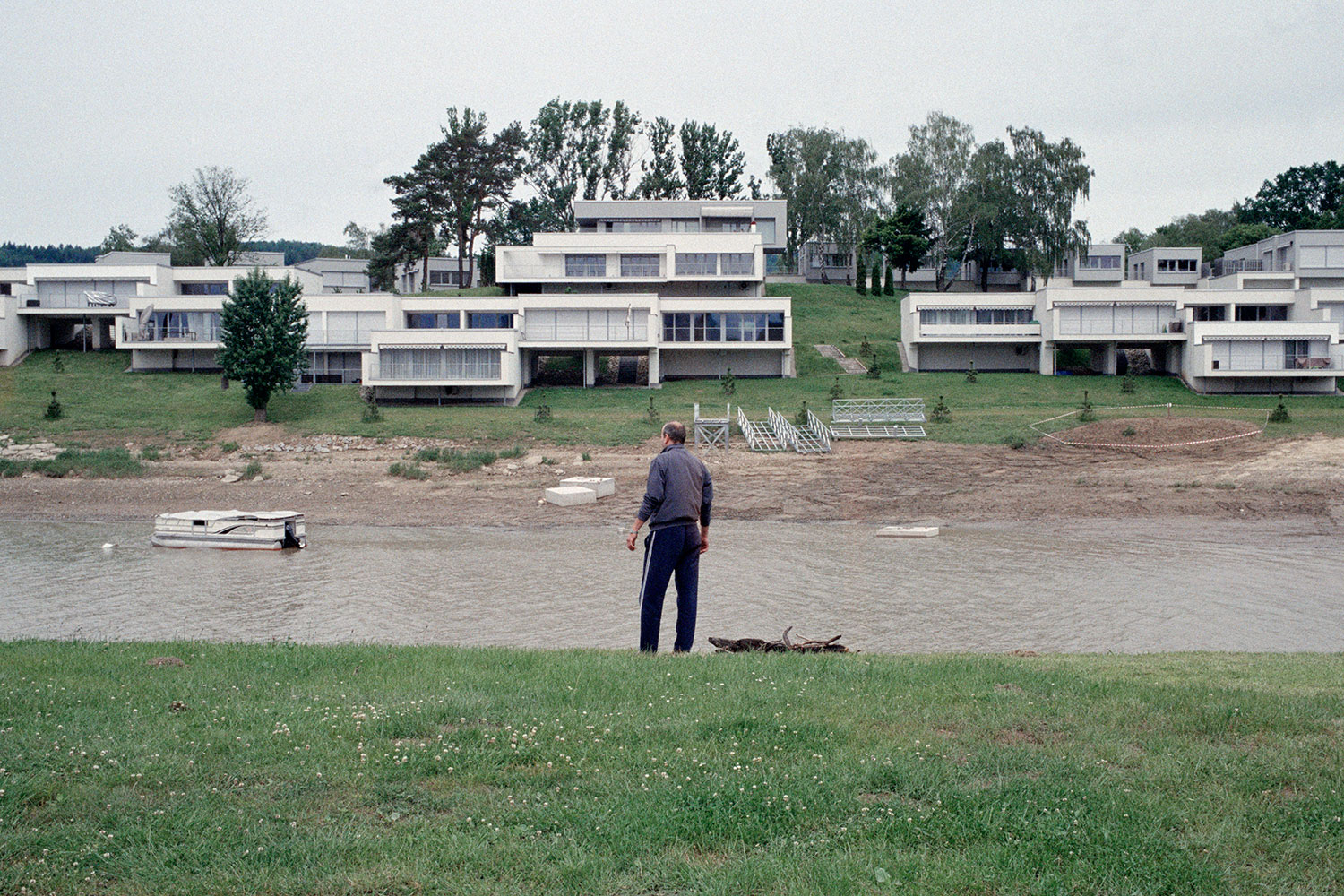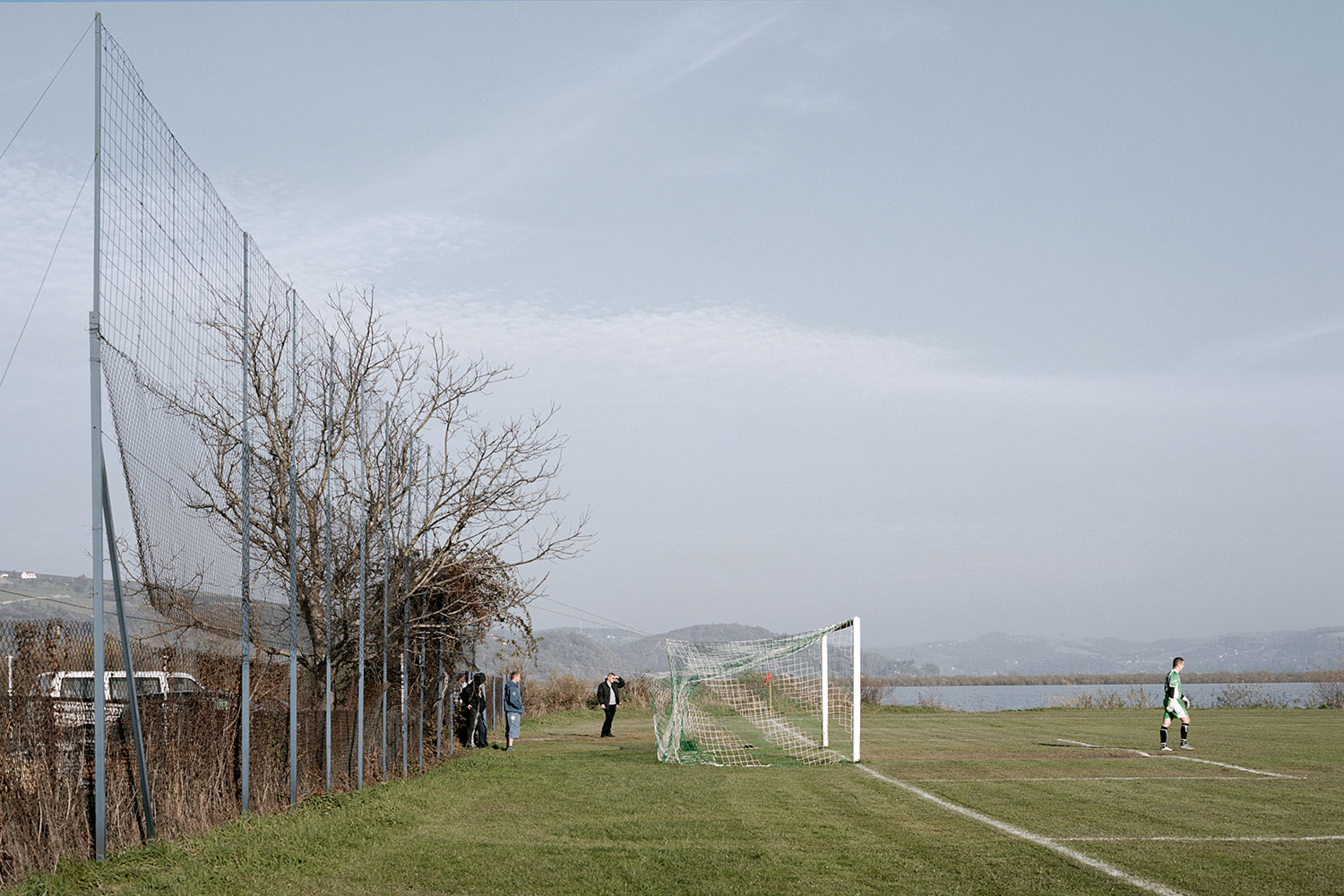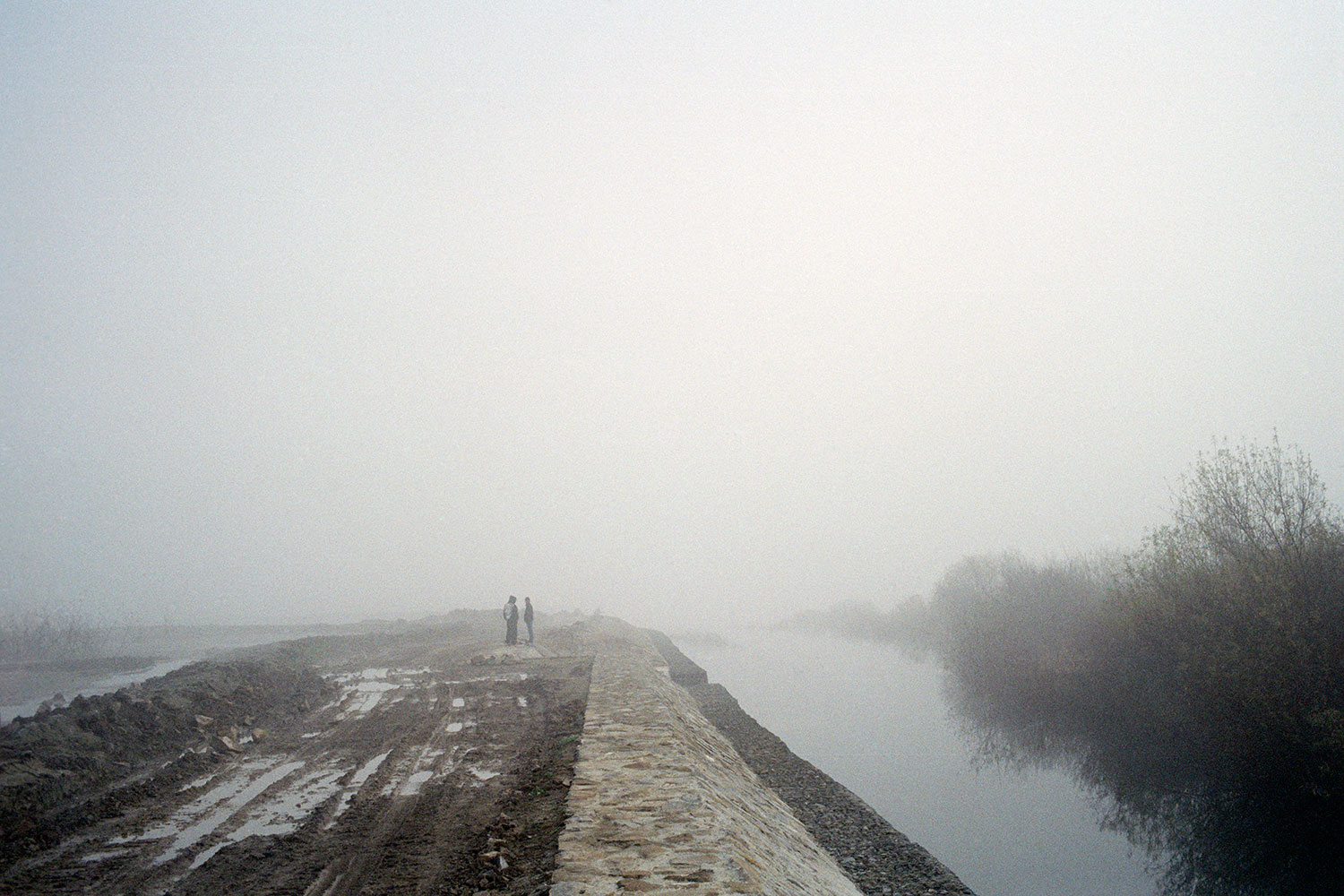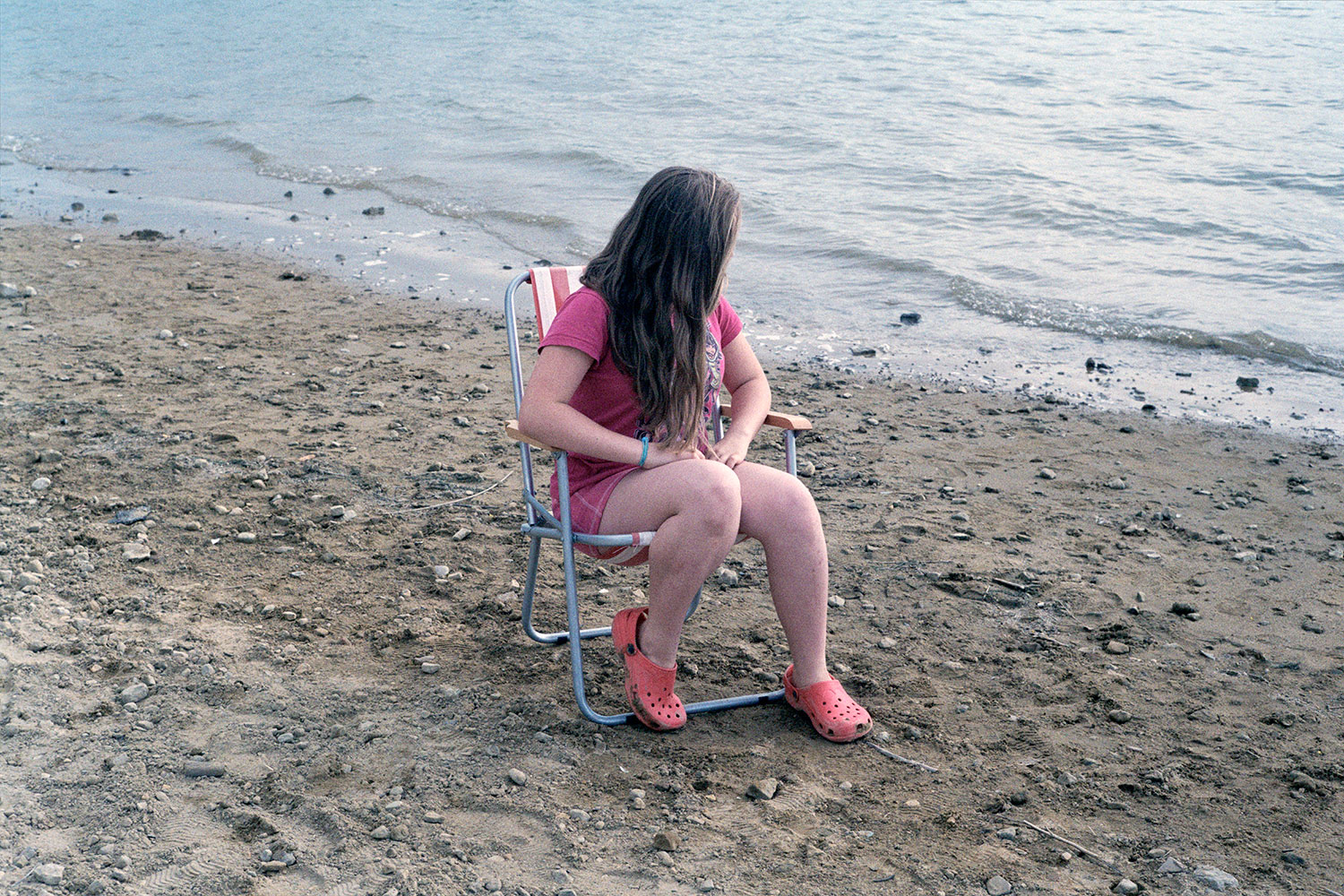Ripple effect: getting to the bottom of Poland’s disappearing lakes
We recently featured the Aral Sea catastrophe, which had drastic effects on surrounding industry, livelihoods and climate. And with global warming an increasing cause for concern, the topic of disappearing lakes is a pertinent one. This is especially the case in photography, which has its own special relationship with absence.
“I remember it was at the lakes where I tried my very first Pepsi cola”
The lakes of Roznowskie and Czchowskie, located along the river Dunajec in southern Poland, are different in this respect, because the two man-made constructions were only ever meant to last 75 years. Yet the issue is no less urgent for the local community, who suvive on agriculture and tourism, combined with a job in the city. Polish photographer Krzysztof Racoń grew up in Nowy Sacz, a city 20km away from the lakes. After years of passing by the lakes on his journeys to Krakow where he studied, in 2013 he decided document the changes not only of the lakes itself but people’s relationship with them.
“Both lakes were established in the 1940s in southern Poland along the mountain river Dunajec, which in the past had severely flooded neighbouring towns and caused major damage to households. In the beginning its main role was to prevent the river from flooding and retain water within a limited territory. In order to do so two dams were built and then two water reservoirs emerged afterwards,” says Racoń.
The region that surrounds Roznowskie and Czchowskie lakes is characterised by valleys and orchards growing apples, plums and currants. The lakes gave people another reason to visit, becoming a popular summer spot over the subsequent decades boasting sailing, kayaking, motor boating, fishing, discotheques and camping. During the communist era, the lakes attracted steelworkers and miners, “who could count on spending their holidays at one of the state-owned hotels for employees,” Racoń explains.
The hotels were eventually privatised after communism. “Some have successfully converted themselves into low-budget accommodation while others are still awaiting better times. In recent years the local leisure offering has been ‘upgraded’ with the construction of a 5-star hotel, modern apartments for rent, spas and music clubs which all contrasts with the folky, rural, kitschy-cosy architecture that used to dominate throughout last decades. One of interesting places is a club called Space where on one floor you can dance to folk music usually played at weddings, while at the second floor you find a disco club with a modern interior design that would eclipse the best dance floors in Warsaw,” the photographer adds.
For many young people the lakes have been something like a second home: they offered summer camps for children, who would return to the lake in their teens to revel in the sun and freedom with their friends. “I remember it was at the lakes where I tried my very first Pepsi cola. I might have been 4 or 5 years old.” Then, Racoń‘s family began to go on vacation further afield: “My relationship with the lakes became limited to looking through a car/bus window while passing by them,” he says. Like Racoń‘s family, those who had the choice to go on a beach holiday abroad soon abandoned their summers by the lakes, long before they began drying up. “There are still many people attached to this place who regularly come and spend their holidays by the lakes. Many of whom do it out of nostalgia for the past, the golden years for the lakes, which were also years of their youth,” the photographer adds.
Some of Racońs photos have an elegiac quality, as a result of also including photos shot out of season. “I remember I started shooting in autumn when on most days the lakes were covered with dense fog, which only enchanced the melancholic mood. I liked the quiet, silent atmosphere of these lakes and most of the photos from that initial period follow this feeling,” he says. Other photos reflect the ways the lakes have always been enjoyed by today’s youth. “Since the beginning I knew this would be a story of disappearing lakes, a world that is fading away, so I simply wanted to confront that assumption with what I would observe during high season,” Racoń says.
Text: Liza Premiyak
Image: Krzysztof Racon
